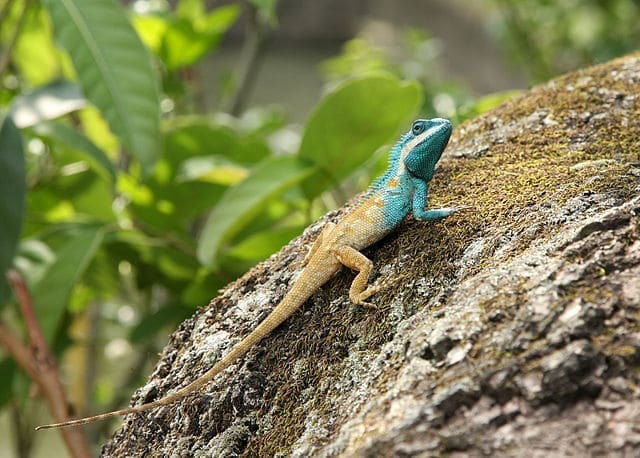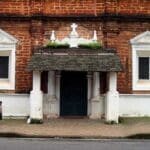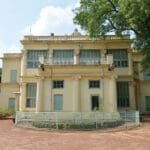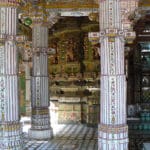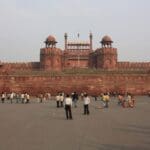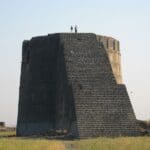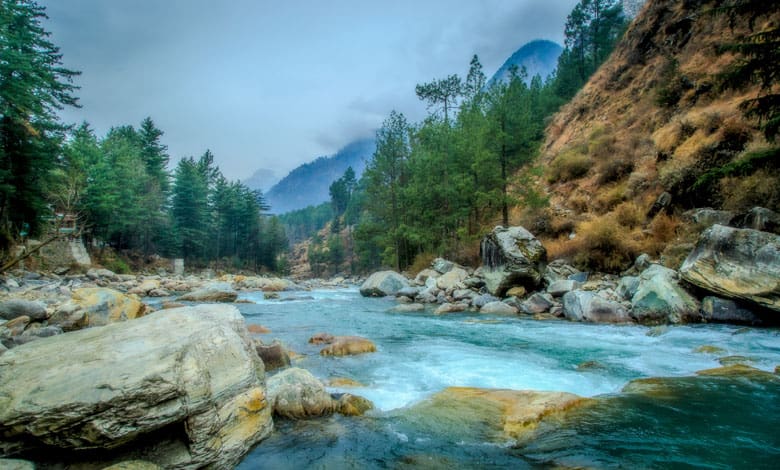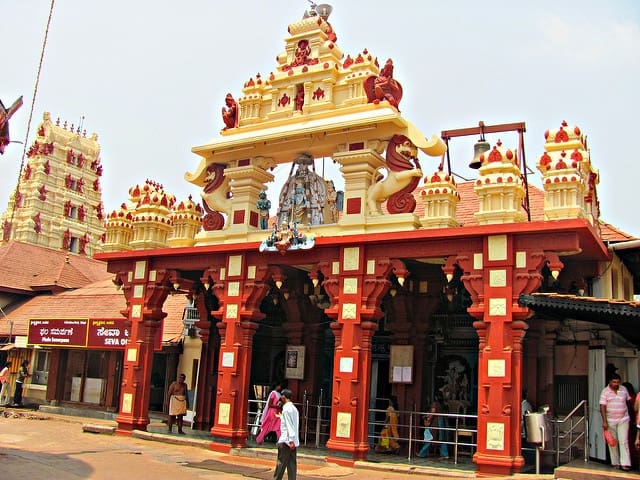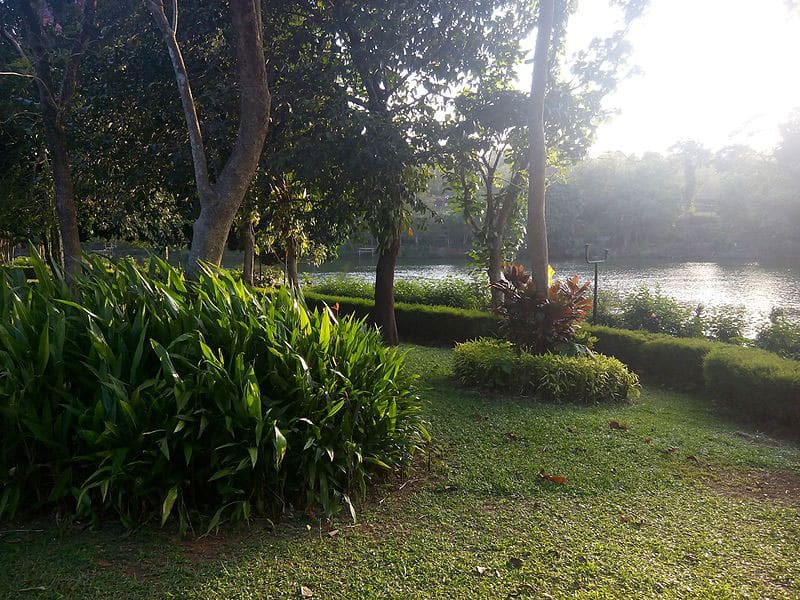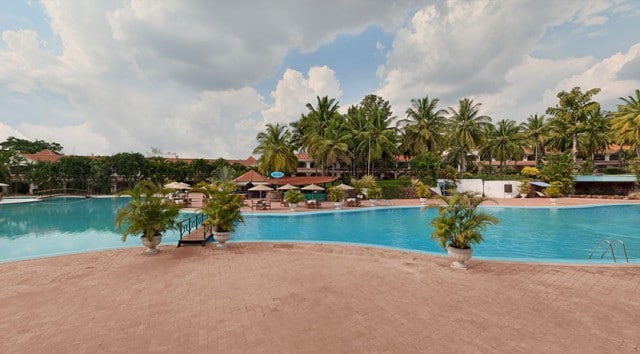Nestled in the heart of West Bengal, Bishnupur captivates with its timeless aura, rich history, and the warm hospitality of its people. This enchanting town, renowned across India for its intricately carved terracotta temples, is not just a destination; it’s a living gallery where every brick and byway tells a story. As you set out to explore the Top 5 Places to Visit in Bishnupur, prepare for a journey through vibrant marketplaces, legendary music traditions, sprawling temple complexes, and the echoes of the Malla dynasty’s glories. This guide is your invitation to experience Bishnupur in all its splendor, uncovering historical depth, cultural wealth, and breathtaking artistry at every turn.
Bishnupur’s Heritage: A Journey Through Ancient Grandeur
The Historical Tapestry
Rooted in the vibrant traditions and spirited artistry of the 17th-century Malla kings, Bishnupur thrived as a center for culture, music, and architecture. The Mallas, great patrons of art, transformed the town into an epicenter of architectural innovation. Their devotion resonates vividly in every temple, every sculpture, and every corner of Bishnupur.
The Spirit of Bishnupur
-
Fusion of Art Styles: Bask in a townscape where Bengali, Oriya, and Dravidian architectural influences converge.
-
Living Legends: Discover temples that double as epic canvases, each panel and sculpture depicting timeless stories from the Ramayana and Mahabharata.
-
Cultural Melting Pot: Enjoy a tapestry of local festivals, music, handicrafts, and exquisite culinary delights.
1. Rasmancha: The Temple of Festivals and Legends
Architectural Symbology
The Rasmancha stands tall as Bishnupur’s crowning jewel, an age-old icon that commands respect and wonder. Built in 1600 by King Bir Hambir, it is the oldest brick temple in Bishnupur, constructed specifically to display idols from other temples during the grand annual Ras festival.
What Makes Rasmancha Unique?
-
Pyramidal Grandeur: Its pyramidal roof, towering arches, and continuous galleries set Rasmancha apart from all other temples in India.
-
Terracotta Glory: Every inch of the Rasmancha’s outer walls is festooned with terracotta plaques—intricate scenes of gods, warriors, and daily life frozen in time.
-
The Festival Heart: Once a year, the Rasmancha becomes a living museum as the idols of Radha-Krishna from every local temple are displayed here for public homage.
Visitor Experience
-
Access & Timings: Well-marked pathways lead visitors to the Rasmancha, open daily from sunrise to sunset.
-
Photography: The gentle light of dawn and dusk brings out the reddish warmth and shadow-play of the bricks—ideal for avid photographers.
2. Jor Bangla Temple: Twin Peaks of Artistic Brilliance
The Charm of Chala Style
The Jor Bangla Temple, constructed in 1655 AD by Raghunath Singh, dazzles with its double hut-shaped design. This architectural motif, “chala,” mirrors the style of rural Bengali cottages, granting the structure a homely, yet majestic appearance.
Highlights of Jor Bangla
-
Decorative Story Panels: Its facade is a living storybook, depicting vivid scenes from epic tales, royal life, and daily activities from centuries ago.
-
Architectural Harmony: The twin ‘huts’ (bangla) are seamlessly joined—one serving as a manifold porch and the other as sanctum.
Must-See Features
-
Terracotta craftsmanship: Marvel at high-relief tiles showing battles, chariot races, musicians, dancers, gods, and legendary episodes.
-
Spiritual Center: The divine presence of Lord Krishna echoes from every stone, drawing countless pilgrims and cultural enthusiasts alike.
Traveller Tips
-
Savor the Details: Guided tours enhance appreciation for motifs and the temple’s history.
-
Peak Time: Late afternoon sunlight brings intricate carvings to life—don’t miss this golden hour.
3. Shyam Rai Temple: Five Pinnacles of Magnificence
Panch Ratna Perfection
The Shyam Rai Temple is renowned for its “panch ratna” or five spire architecture—a central larger pinnacle flanked by four corner towers—creating a striking image against Bishnupur’s skyline.
Discover Shyam Rai’s Wonders
-
Krishna Leela Narratives: The walls are covered with Raslila scenes in terracotta, illustrating the divine dances and celebrations of Krishna and the gopis.
-
Symmetrical Brilliance: Perfectly aligned square layout, with pillars and arches supporting the multi-layered roof design.
Cultural Importance
-
Janmashtami Celebrations: During Lord Krishna’s birthday festivities, Shyam Rai glows with spiritual fervor—music, devotion, and joy fill the temple grounds.
Experience Tips
-
Time Your Visit: Early mornings or late evenings enhance the texture of terracotta under the changing sunlight.
-
Storytelling Guides: Hire a local guide for fascinating, in-depth interpretations of the friezes.
4. Madan Mohan Temple: The Beating Heart of Bishnupur’s Devotion
A Sanctuary for Pilgrims
Constructed in 1694, the Madan Mohan Temple has been the epicenter of Krishna worship in Bishnupur for centuries. Built in the ‘eka-ratna’ style, it features a distinctive single pinnacle atop a massive square base.
Cultural Significance
-
Epic Artwork: The outer walls host a vibrant array of terracotta reliefs—playful outings of Krishna with Radha and friends, scenes from folk stories, and representations of social life in the 17th century.
-
Spiritual Magnet: Every evening, the temple resounds with aarti hymns, drawing pilgrims and music lovers. Locals recount that the temple’s aura enhances spiritual peace, making every visitor feel connected to its sacred grounds.
Experiences Not to Miss
-
Prasad & Rituals: Participate in the bhog (offering) distribution for a taste of tradition.
-
Cultural Performances: Witness live kirtans and classical dance events during major festivals.
5. Dalmadal Cannon: A Legend of Bishnupur’s Valor
Defender of the Realm
Standing fiercely on the outskirts of the temple belt, the Dalmadal Cannon is a massive iron weapon, forged in defense against repeated Maratha attacks in the 17th century.
Key Features
-
Historic Scale: Extending over 12 feet and weighing several tons, the Dalmadal Cannon was a technological marvel of its time.
-
Engineering Feat: Built by local blacksmiths, with legends suggesting divine help, this cannon played a pivotal role in defending the Malla kingdom.
Why Visit?
-
Photo Opportunity: The sheer size and setting of the cannon make it a must-see for visitors.
-
Cultural Insight: Walk through the neighborhood to glimpse ancient weapons, traditional streets, and relics of the Malla warriors.
Bishnupur Beyond the Icons: Additional Attractions & Immersive Experiences
The Bishnupur Gharana: An Ode to Classical Music
-
Origins: The Bishnupur Gharana is one of India’s oldest schools of classical music, with deep roots in dhrupad singing.
-
Live Performances: Catch local concerts, especially during festive seasons, in temple courtyards and community spaces.
-
Instrument Craft: Bishnupur craftsmen produce revered classical instruments like the sitar, veena, and tabla.
Shopping in Bishnupur
Baluchari Sarees
-
Artisan’s Masterpieces: These sarees feature woven mythological stories and are exclusive to Bishnupur. Visit local ateliers for demonstrations and authentic purchases.
Terracotta Handicrafts
-
Street Shopping: From ornamental tiles and souvenirs to traditional horses and jewelry, everything is crafted in richly patterned clay, echoing temple motifs.
Best Time to Visit Bishnupur
-
October to March: Cool, pleasant weather ideal for exploring temples and enjoying festivals.
-
Monsoon: The landscape comes alive, but plan for brief showers.
-
Cultural Calendar: Plan trips around major festivals for a deeper, immersive experience.
Travel Planning: Getting to Bishnupur and Staying Comfortably
Getting There
-
By Air: Nearest airport is Kolkata (Netaji Subhas Chandra Bose International Airport), 130km away. Taxis and buses available.
-
By Train: Directly connected to Kolkata, Howrah, and Bankura. The Bishnupur station is near the old town.
-
By Road: Frequent state buses, tourist coaches, and private cars are available from major West Bengal towns.
Where to Stay
-
Heritage Hotels: Many restored havelis operate as boutique hotels, offering immersive heritage stays.
-
Budget Options: Lodges, guesthouses, and homestays are available close to temple sites.
-
Booking Advice: Reserve in advance during festival seasons for best choices.
Local Cuisine
-
Must-Try Dishes: Relish signature Bengali thalis, fish curries (shorshe ilish), and sweets (shondesh, mishti doi).
-
Street Foods: Savor spicy kathi rolls, puchkas, and temple prasad.
-
Where to Eat: Local restaurants, temple kitchens, and roadside stalls offer unforgettable flavors.
Major Festivals and Events in Bishnupur
Key Festivals
-
Ras Festival: Massive display of idols at the Rasmancha, with music, dance, and traditional rituals.
-
Janmashtami: Krishna’s birthday is an all-night celebration, especially potent at Madan Mohan Temple.
-
Bishnupur Mela: A vibrant showcase of art, handicrafts, folk performances, and regional delicacies.
Cultural Heritage
-
Daily Evening Concerts: Attend traditional Bishnupur Gharana recitals at select temples and community halls.
-
Open-Air Dramas: Folk plays and dances staged during major festivals celebrate Bishnupur’s living traditions.
Nearby Exploring: Beyond Bishnupur
Day Trips
-
Susunia Hills: Trekking, ancient rock art, and mineral springs, 50km from Bishnupur.
-
Joyrambati & Kamarpukur: Birthplaces of Sri Sarada Devi and Sri Ramakrishna Paramahamsa draw pilgrims and spiritual travelers.
-
Mukutmanipur Dam: Boating, picnics, and scenic views for nature lovers.
Practical Tips for Bishnupur Visitors
-
Cash is King: Carry sufficient cash, especially when shopping with rural artisans.
-
Respectful Dress: Modest clothing is appreciated, particularly when visiting temples.
-
Footwear Etiquette: Always remove shoes before entering sacred precincts.
-
Photography: Abide by signage and avoid flash inside temples.
-
Guided Tours: Expert guides deepen understanding of historic and religious context.
Sustainable Tourism and Responsible Travel
-
No Littering: Help preserve the heritage sites by keeping them clean.
-
Support Local: Purchase crafts and textiles directly from artisans.
-
Eco-Conscious: Walk or cycle within the temple district to minimize pollution.
Frequently Asked Questions (FAQs) about Bishnupur
-
What is Bishnupur famous for?
Bishnupur is renowned for its terracotta temples, classical music tradition, Baluchari sarees, and stunning art and handicrafts. -
How can I reach Bishnupur from Kolkata?
Take a direct train from Howrah or drive (about 4 hours) via the well-maintained highways. -
Which temples should I prioritize?
Rasmancha, Jor Bangla, Shyam Rai, Madan Mohan, and Radha Shyam temples are must-sees, along with the Dalmadal Cannon. -
Can I visit all five main attractions in one day?
Yes, but a 2-day stay allows you to appreciate the temples and the town’s ambiance more fully. -
Are English-speaking guides available?
Yes, trained guides proficient in English, Bengali, and Hindi can be hired at main tourist spots. -
Which are the main festivals in Bishnupur?
The Ras Festival, Janmashtami, Bishnupur Mela, and local classical music events. -
What should I buy when visiting Bishnupur?
Terracotta artifacts, Baluchari sarees, local sweets, and handwoven textiles. -
Are accommodations family-friendly?
Yes, most hotels are welcoming for families and travelers of all ages. -
Do the temples have any dress code?
Modest attire is recommended; covering shoulders and knees is appreciated. -
Is vegetarian food easily available?
Yes, vegetarian Bengali cuisine is easily found in local eateries. -
Are there ATMs in Bishnupur?
There are a few ATMs, but carrying cash is advised for smaller purchases. -
Do artisans allow visitors to observe their craft?
Many local workshops welcome tourists for demonstrations and direct sales. -
Is Bishnupur suitable for elderly visitors?
Yes, with gentle walks and plenty of sitting areas near the temples. -
What health precautions should I consider?
Carry bottled water, and avoid very spicy street food if unaccustomed. -
Is internet available in Bishnupur?
Most hotels offer Wi-Fi; mobile coverage is decent in major zones.


